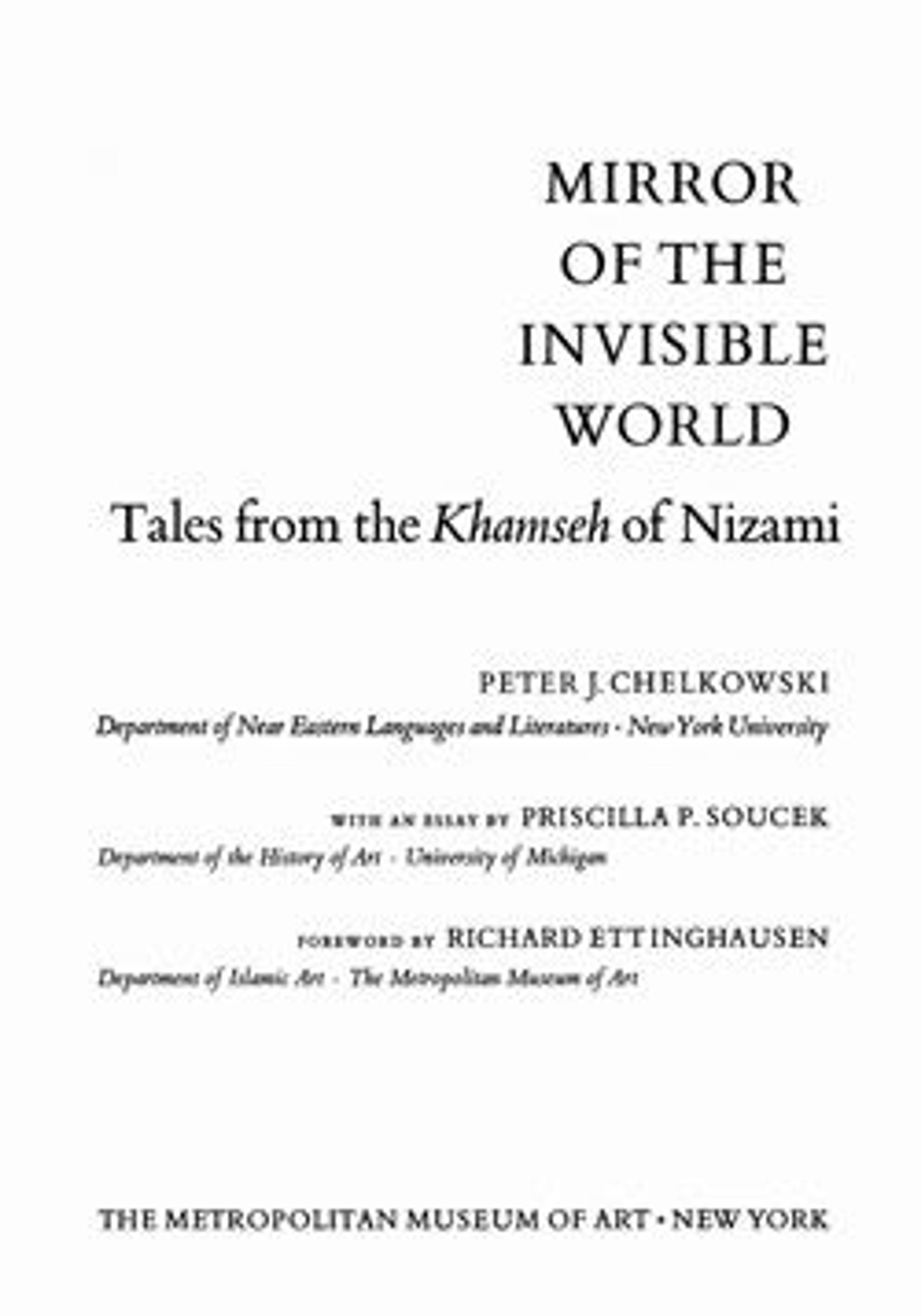"Bahram Gur in the Dark Palace on Saturday", Folio 207 from a Khamsa (Quintet) of Nizami of Ganja
The artist has used the color black, which according to the text, should be all-pervasive, with elegant restraint. He has, like a skilled haute-couturier, avoided somberness and set off the black by contrasting it with both bright colors and light shades. Also its use in each costume and in the dome and spandrels of the architecture effectively unifies the composition. The air of courtly leisure in this miniature is particularly apparent.
Artwork Details
- Title:"Bahram Gur in the Dark Palace on Saturday", Folio 207 from a Khamsa (Quintet) of Nizami of Ganja
- Author:Nizami (present-day Azerbaijan, Ganja 1141–1209 Ganja)
- Calligrapher:Sultan Muhammad Nur (Iranian, ca. 1472–ca. 1536)
- Calligrapher:Mahmud Muzahib (Iranian, ca. 1500–1560)
- Artist:Painting by Shaikh Zada (Iranian, active 1510–1550)
- Date:931 AH/1524–25 CE
- Geography:Made in present-day Afghanistan, Herat
- Medium:Ink, opaque watercolor, silver, and gold on paper
- Dimensions:Painting: H. 8 in. (20.3 cm)
W. 4 1/2 (11.4 cm)
Page: H. 12 1/2 in. (31.9 cm)
W. 8 3/4 in. (22.2 cm)
Mat: H. 19 1/4 in. (48.9 cm)
W. 14 1/4 in. (36.2 cm) - Classification:Codices
- Credit Line:Gift of Alexander Smith Cochran, 1913
- Object Number:13.228.7.8
- Curatorial Department: Islamic Art
More Artwork
Research Resources
The Met provides unparalleled resources for research and welcomes an international community of students and scholars. The Met's Open Access API is where creators and researchers can connect to the The Met collection. Open Access data and public domain images are available for unrestricted commercial and noncommercial use without permission or fee.
To request images under copyright and other restrictions, please use this Image Request form.
Feedback
We continue to research and examine historical and cultural context for objects in The Met collection. If you have comments or questions about this object record, please contact us using the form below. The Museum looks forward to receiving your comments.
